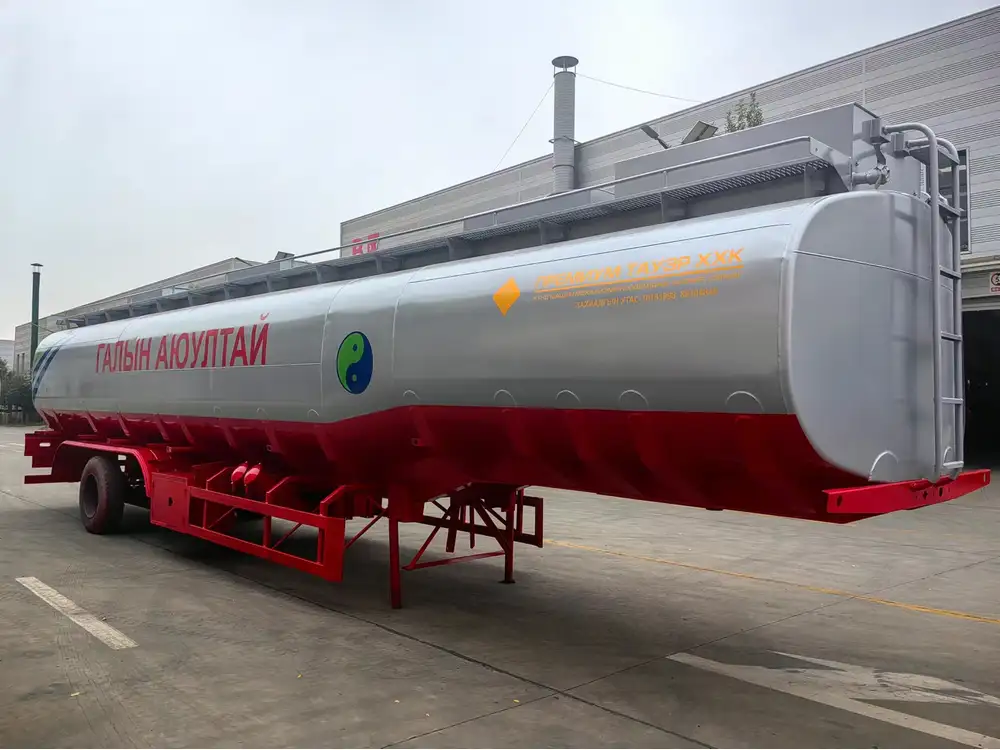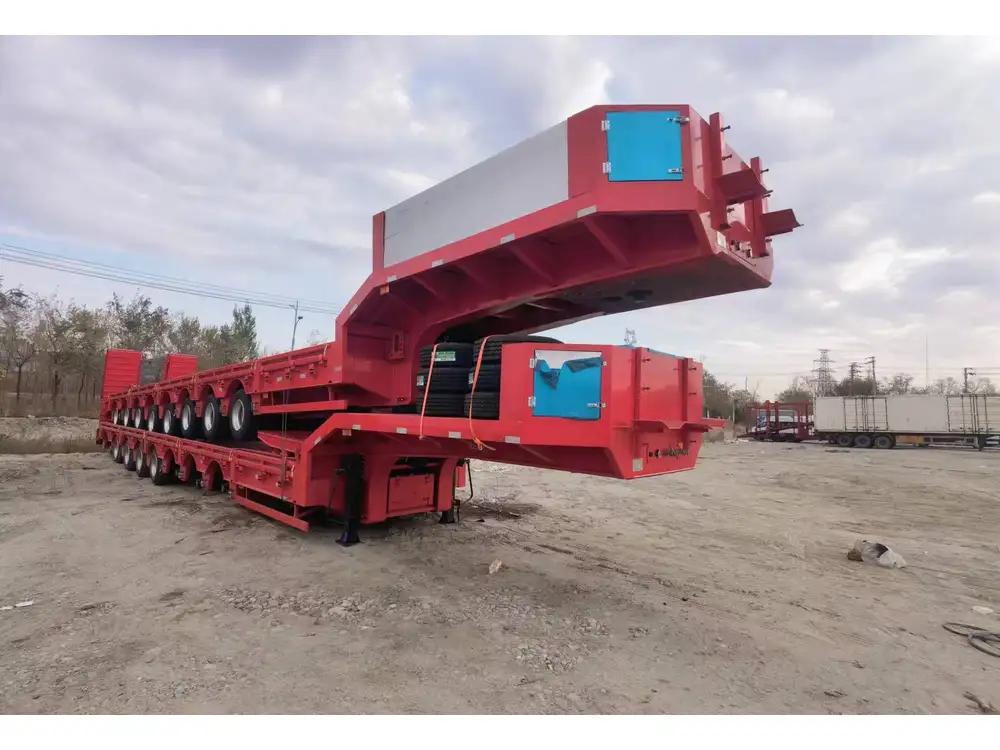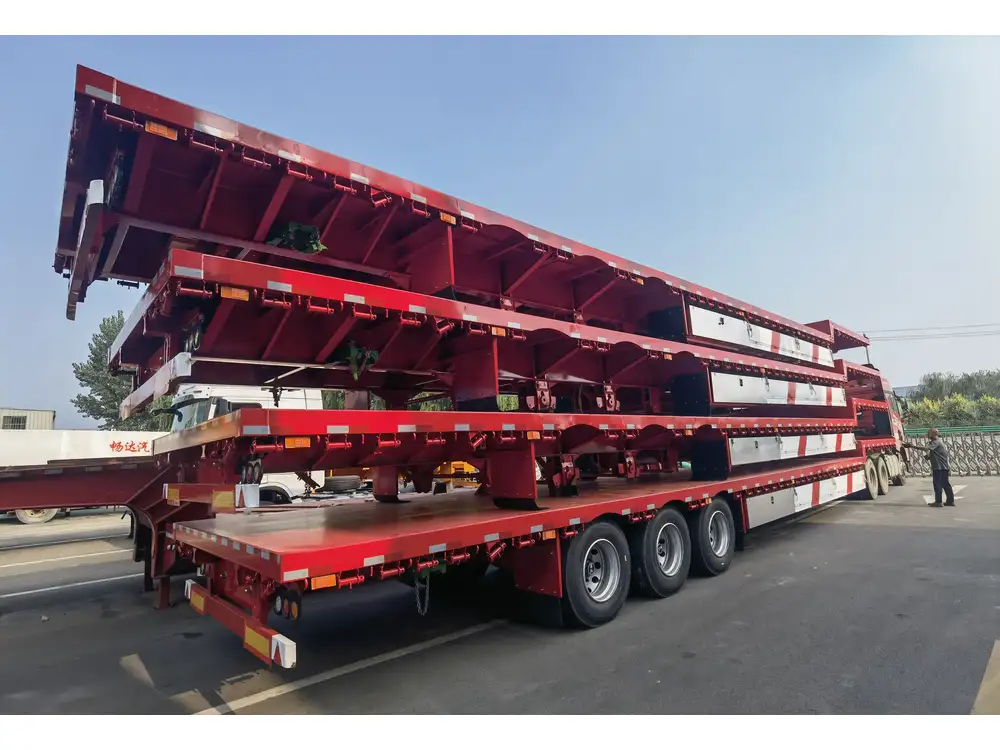Understanding the right size jack for your dump trailer is crucial for safe and effective operations. This article delves into the various aspects of selecting the appropriate jack, ensuring that readers not only receive answers to their questions but also gain in-depth insights into maintaining safety and efficiency in their operations.
Importance of Selecting the Right Jack
Choosing the right jack is not simply a matter of convenience; it can significantly affect operational safety. An incorrectly sized jack may lead to accidents, inadequate support during unloading, or damage to the trailer or its cargo. Therefore, understanding the specifications and capabilities of jacks compatible with your dump trailer is essential.
Key Considerations When Choosing a Jack
Selecting the correct jack involves multiple factors, each contributing to the jack’s effectiveness. Below, we detail some of the critical elements you need to consider:
| Factor | Description |
|---|---|
| Weight Capacity | The jack must support the maximum load your dump trailer can carry. |
| Height Range | Must accommodate the necessary lift height for unloading tasks safely. |
| Type of Jack | Decide between scissor jacks, hydraulic jacks, or electric jacks based on your needs. |
| Mounting Style | Consider whether the jack is a-frame, tongue-mounted, or drop-leg based on your trailer design. |
| Material Durability | Choose corrosion-resistant materials to enhance longevity, especially for outdoor use. |
Each of these factors plays a critical role in ensuring the jack you choose not only meets your operational requirements but also adheres to safety regulations.

Types of Jacks for Dump Trailers
Understanding the types of jacks available can simplify the decision-making process. Here’s a closer look at the primary types of jacks typically used with dump trailers:
1. Hydraulic Jacks
Hydraulic jacks use fluid pressure to lift heavy loads, making them highly effective for dump trailers, especially during unloading. They can easily lift more weight than traditional mechanical jacks and require minimal effort to operate.
Pros:
- High load capacity
- Efficient lifting mechanism
- Ideal for heavy-duty applications
Cons:
- More expensive compared to other jacks
- Requires regular maintenance to prevent leaks
2. Scissor Jacks
Scissor jacks are typically lighter and designed for easier manual operation. They provide decent lifting heights but may not be sufficient for extremely heavy loads.
Pros:
- Lower cost
- Less maintenance required
- Easy to store and transport
Cons:
- Limited load capacity
- Slower lifting speed compared to hydraulic options

3. Electric Jacks
Electric jacks are designed for user convenience, allowing you to lift heavily loaded trailers with the simple push of a button. They can be integrated into the trailer’s electrical system for easy accessibility.
Pros:
- Minimal physical effort required
- Fast operation
- High load capacity
Cons:
- Dependence on power sources
- More expensive than manual jacks
4. Drop-Leg Jacks
Drop-leg jacks streamline the height adjustment process by providing an adjustable leg that drops down to various positions, allowing for quick setup. They are often used for larger trailers due to their robust design.
Pros:
- Quick height adjustment
- Sturdy build
- Reliable for heavier loads
Cons:
- Can be bulky
- May require additional maintenance
Determining Load Capacity
Start by assessing the load capacity of your dump trailer. This data is paramount in deciding which jack to choose. To calculate and confirm the jacks’ load capacity, follow these steps:
Check the Manufacturer’s Specifications: Each dump trailer usually comes with a specified maximum weight load. This information can typically be found in the user manual or on the manufacturer’s website.
Evaluate the Cargo Type: Consider the type of materials you routinely carry. Heavy aggregates like gravel, dirt, or lumber all have varied weights. Ensure that your jack can accommodate these loads safely.
Safety Margins: Always choose a jack that exceeds your anticipated load requirements. A good rule of thumb is to select a jack with at least 20% more lift capacity than your trailer’s maximum weight.

Example of Load Calculation
| Load Type | Weight (Pounds) |
|---|---|
| Gravel | 3,000 |
| Sand | 2,500 |
| Lumber | 4,200 |
| Total Load | 9,700 |
If the maximum load of your dump trailer is 10,000 pounds, then select a jack that can support at least 12,000 pounds.
Assessing Height Requirements
The height that a jack must achieve to properly lift a dump trailer varies based on the design of the trailer and the type of load being unloaded. Below are steps to help determine the suitable height for jack selection:
Measure the Coupler Height: When the dump trailer is disconnected from the towing vehicle, measure the height of the trailer coupler from the ground.
Consider the Dump Height: Depending on how high you will need to raise the trailer for unloading, consult the manufacturer’s specifications or owner’s manual for the dump angle.
Account for Terrain: If you typically unload on uneven terrains, consider a jack with adjustable height settings or a longer stroke length.
Example Height Requirements
| Operation | Height Needed (Inches) |
|---|---|
| Standard unloading operation | 36 |
| Unloading in uneven terrain | 42 |
| Maximum dump angle requirement | 48 |

Mounting Considerations
The trailer’s design influences how and where you can mount the jack. Common mounting styles include:
A-Frame Mount
Typically affixed to the trailer’s tongue, this style is commonly used for utility and flatbed trailers, providing good stability and ease of use.
Drop-Leg Mount
Mounted directly under the trailer, this type allows for quick setup and can handle significant weight but may require more maintenance for mobile use.

Swing-Up Mount
Provides a versatile design, allowing for easy lifting and storage without taking up valuable space.
Maintenance Tips for Your Jack
Maintaining your jack ensures longevity and reliable performance. Some essential maintenance tips include:
- Regular Inspections: Periodically check for signs of wear, rust, or hydraulic leaks.
- Proper Lubrication: Keep moving parts well-lubricated to prevent sticking or jamming.
- Weather Protection: Use covers or store jacks indoors to guard against moisture and extreme weather.
- Replace Worn Out Parts: Be proactive in replacing damaged or worn-out components to maintain safety.
Conclusion: Selecting the Right Jack for Your Dump Trailer
Choosing the correct jack for your dump trailer is a pivotal decision that impacts performance and safety in operations. By considering factors such as load capacity, height requirements, and adding preventative maintenance into the mix, you can significantly enhance your operational efficiency and safety.
Before making a purchase, always consult the manufacturer’s guidelines to ensure compatibility with your specific dump trailer model. Armed with this information, you can confidently choose a jack that meets your needs, facilitating smoother and safer operations for your hauling tasks.
Take the time to assess your requirements thoroughly; your trailer’s optimal functionality and your safety depend on the right selection!



